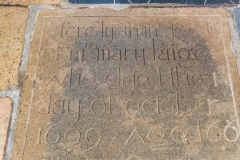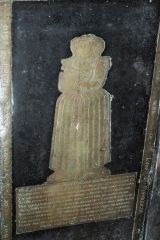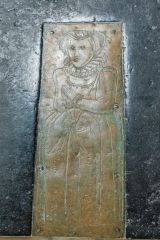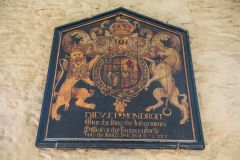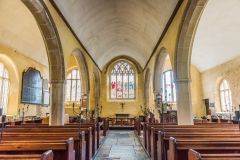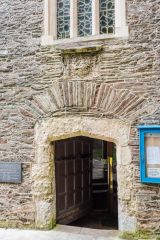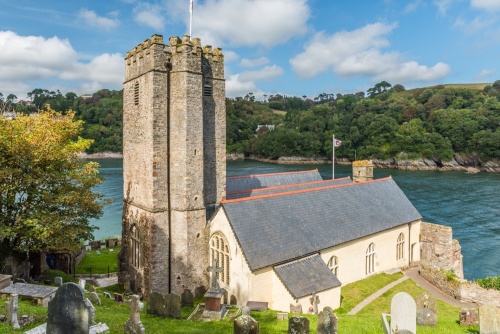
The medieval church of St Petrox is part of a complex of historical buildings that make up Dartmouth Castle, at the head of the River Dart about a mile south of Dartmouth town centre.
History
The church is first mentioned in records dated 1192 when it is referred to as the 'monastery of St Peter'. Very little is known about the origins of the church, but one theory is that it was founded by St Petrox himself. Petrox (variously known as Petroc or Petrock) was a 6th-century Welsh prince who turned his back on his worldly life. He studied in Ireland then returned to the West Country to preach Christianity. He was based primarily at Bodmin in Cornwall.
The connection to St Petrox is tenuous, but it seems possible that there was a small cell of monks living here as early as the late 9th century. The monks are thought to have maintained a beacon as an aid to navigation. Indeed, one theory is that the lighthouse came first, and the church was added later to a site already important to sailors.
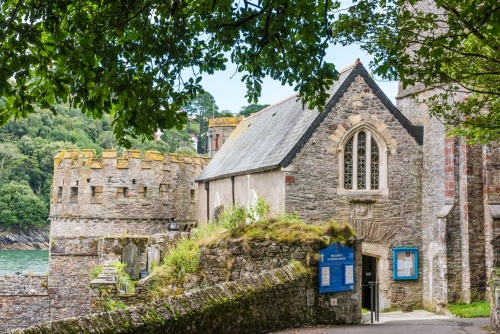
It seems very likely that there was an early minster, or mother church for the region, long before the Norman Conquest. The building we see today dates to the late 12th century, but it was rebuilt and enlarged in 1641. The striking west tower, which is such a prominent landmark along the coast, was probably built around 1642.
The church was incorporated into the complex of 15th-century buildings that became Dartmouth Castle, and for centuries it as used by the castle garrison. It backs onto the early Tudor gun battery and is a stone's throw from the later Victorian battery.
It would appear that St Petrox was used by Huguenot refugees after 1687. We do know that a Huguenot minister named Andre Majendie was buried here in 1734.
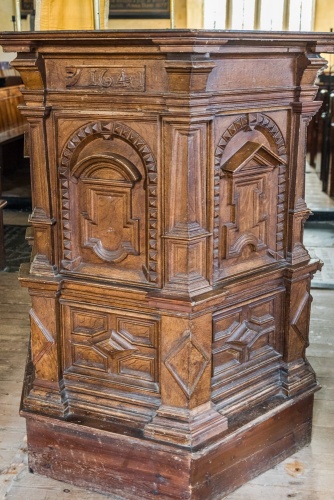
Highlights
The oldest part of the present church is a Norman font, most likely dating to the late 12th century. The font bowl is decorated with a carving of honeysuckle.
The finely carved octagonal pulpit dates to 1641 and there are 17th-century panels incorporated into a screen at the west end of the south aisle. These panels may have formed part of a west gallery that was taken down in 1885.
On the south wall is a painted royal coat of arms to Charles II dated 1660. On the north wall are painted benefaction boards. The oldest bequest dates to 1672 and commemorates the bequest of John Lovering, who built a house for old seamen and their widows.
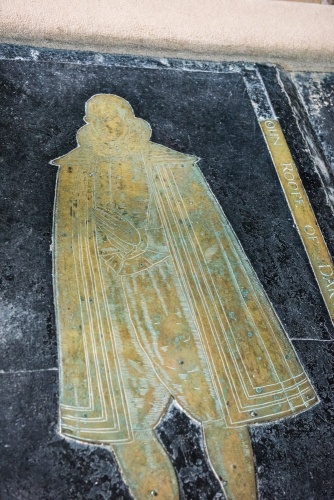
The best historical feature is a row of three memorial brasses to the right (south_ of the altar. All three are in very good condition but the best - and largest - is to John Roope (d 1609). The others commemorate Dorothy Rous (died 1617) and Barbara Plumleigh (died 1610). In the south aisle is a monument to Nicholas Roope (d 1625) and at the east end of the aisle is a memorial to another member of the Roope family, Edward Roope (d 1674) and his wife Elizabeth (d 1683).
Look for a poignant memorial to Henry A Widdicombe, a sailor on the HMS Oppossum, who died from exposure on 23 November 1918. The memorial is a reminder of the close links between St Petrox and the military garrison of Dartmouth Castle and a reminder of the strong links between Dartmouth and the British navy.
If you need another reminder look for the naval ensigns hanging at the west end of the church. also look for a pair of funeral hatchments to members of the Holdsworth family, one of the wealthiest and most important families in Dartmouth over the centuries.
St Petrox Church is a fascinating historical building but what really makes it interesting to visit is its location as part of the Dartmouth Castle complex.
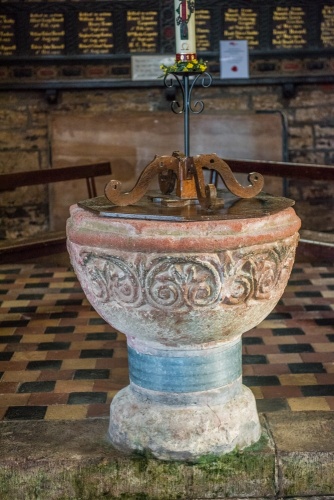
Getting There
The easiest way to reach the church is by car to the Dartmouth Castle parking area on Castle Road, off the B3205 about one mile south of Dartmouth. Easiest, but not necessarily the most enjoyable.
There are two alternate routes; one is to take the pedestrian ferry from the Embankment in Dartmouth, and the other is to simply walk along the coast road from the Embankment, past Bayard's Cove Fort and Warfleet to Castle Road.
This is an extremely pleasant walk and one that our family has taken several times. It will take from 20-30 minutes to reach the church from the embankment, but the views are wonderful and well worth the exertion.
About Dartmouth, St Petrox Church
Address: Dartmouth Castle, Castle Road, Dartmouth,
Devon,
England
Attraction Type: Historic Church
Location: At Dartmouth Castle on Church Road. Parking at the castle car park, or access bt passenger ferry from the Embankment in Dartmouth or on foot following the shore road.
Website: Dartmouth, St Petrox Church
Location map
OS: SX886503
Photo Credit: David Ross and Britain Express
HERITAGE
 We've 'tagged' this attraction information to help you find related historic attractions and learn more about major time periods mentioned.
We've 'tagged' this attraction information to help you find related historic attractions and learn more about major time periods mentioned.
Find other attractions tagged with:
NEARBY HISTORIC ATTRACTIONS
Heritage Rated from 1- 5 (low to exceptional) on historic interest
Dartmouth Castle - 0.1 miles (Castle) ![]()
Gallants Bower Fort - 0.2 miles (Historic Building) ![]()
Bayard's Cove Fort - 0.6 miles (Historic Building) ![]()
Dartmouth, St Saviour's Church - 0.8 miles (Historic Church) ![]()
Dartmouth Museum - 0.9 miles (Museum) ![]()
Coleton Fishacre House and Garden - 1.4 miles (Historic House) ![]()
Greenway - 3 miles (Historic House) ![]()
Stoke Gabriel Church - 4.8 miles (Historic Church) ![]()
Nearest Holiday Cottages to Dartmouth, St Petrox Church:
More self catering near Dartmouth, St Petrox Church
